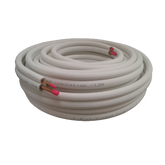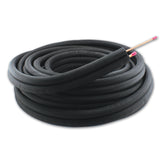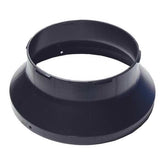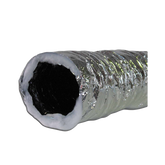Energy Savings
Keeping air in ducts and energy costs down

Duct sealing: The low hanging fruit of energy – and cost - savings
Service contractors are increasingly being looked to for energy management initiatives, and a proactive approach in getting ready for NABERSNZ. Aeroseal duct sealing offers an effective and timely solution that quickly improves the energy performance of HVAC systems.
When considering energy-saving strategies for commercial buildings, it always comes down to cost savings and return-on-investment. Because Aeroseal bypasses the time and labor of manual duct sealing methods, duct sealing is now one of the highest returns on investment strategies building owners can make when it comes to energy savings. Paybacks for duct sealing are typically 3 to 7 years.
In a commercial building, the HVAC system making the workplace comfortable represents roughly 40% of the energy used, and HVAC fan power is 20 - 60% of that HVAC energy usage. This means duct sealing represents an easy energy optimization opportunity. Leaky ductwork is one of the biggest contributors to energy waste in ventilated buildings. If your building has ventilation ducts that haven’t been sealed, chances are you're losing money. Probably quite a lot of money.

Your building's energy consumption can be hugely reduced by sealing ductwork with Aeroseal:
- Aeroseal duct sealing has been proven to be 95% effective at sealing ventilation duct leaks.
- It reduces the amount of power needed to circulate air through ventilation systems. In your building, operating HVAC fans represents 20-60% of your total HVAC energy usage. Independent studies have shown that even a 15% reduction in leakage can reduce fan power requirements by 40% or more – and save you thousands of dollars.
- It reduces energy waste caused when an improperly pressurized building draws unconditioned air in through cracks around doors/windows and through holes in the building shell.
- Finally, duct leakage has been linked to excessive outside air intake through the HVAC system. This extra ventilation air significantly increases the operating cost of the HVAC system.
Holes in ducts mean higher operating costs, harder working HVAC components, and poor building performance.
Sealing ducts will help these issues, and with solving BMS problems, operating to HVAC design specifications and continuous commissioning. Airtight ventilation ducts are essential for smart buildings - and smart building owners. Strategic and forward-thinking building owners and managers realize the advantages of providing living and working spaces that are comfortable, healthy and appealing. They know a building with great thermal comfort and indoor air quality will keep occupiers happy, productive, and extending their leases. When tenants experience high indoor environmental quality, tenant turnover is lower.
With increasing awareness of the benefits of energy-efficient, healthy buildings, the payoffs of investment in a good, airtight ventilation system are increasing too.
Aerosealing ducts have contributed to a higher NABERS rating in Australia, will enhance building performance optimization, and give you a better energy audit result. As we head toward more and more in the direction of net-zero buildings, the loss of air, energy, and dollars from leaking ductwork becomes less and less acceptable.
Aeroseal was invented in America in 1994, and it’s been used in US homes, and commercial, healthcare and hospitality buildings since 1997.
In 2013 Aeroseal was approved by Home Innovations Labs (US) as a National Green Building Standard (NGBS) product. The National Green Building Standard is the only residential green building rating system approved by the American National Standards Institute (ANSI) as an American National Standard. Homes that attain NGBS certification have proven to meet high standards for energy efficiency, sustainability and indoor air quality.
Find Us
- Address: 13 Fairfax Ave, Penrose, Auckland, NZ
- Phone: 09 571 3229
- Email: info@aeroseal.nz
- Choosing a selection results in a full page refresh.







